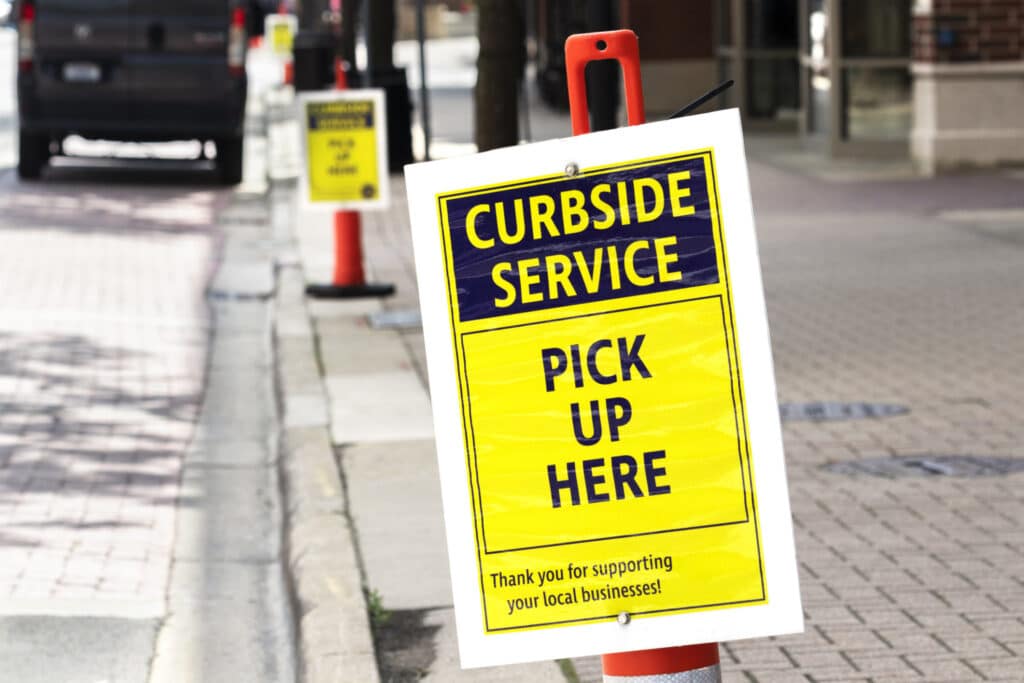Perfecting Curbside Pickup and the Low-Contact Shopping Experience
One of the many things dramatically and likely permanently transformed by the COVID-19 pandemic was the retail shopping experience. Consumers are increasingly prioritizing safety and convenience over in-store experiences. In response, the industry is scrambling to accelerate a wholesale digital transformation to meet these new consumer demands.
On the heels of global stay-at-home orders, online channels weren’t the only mode of commerce that saw an uptick — retailers also saw a 208% spike in digital orders specifying store pickup in April 2020 compared with the prior year, according to Adobe analytics. Retailers, grocers and restaurants doubled down to meet the moment, increasing the availability of low-contact shopping options, including curbside pickup and new contactless delivery offerings.
Bed Bath & Beyond, for example, expanded contactless curbside pickup services to around 90% of its stores while opening half of store locations in June. There is good reason for this expansion roadmap: While traffic to the Bed Bath & Beyond website and mobile app is up approximately 30% and digital sales have doubled, customers are also responding well to the launch of new ‘buy online, pickup in store’ (or BOPIS) and contactless curbside pickup, Bed Bath & Beyond officials said.
Retailers saw a 208% spike in digital orders specifying store pickup in April 2020 compared with the prior year, according to Adobe analytics
But how do you actually make curbside pickup successful, and just as importantly, safe for customers?
Creating a smooth experience
Curbside pickup and contactless delivery are especially complex interactions. They typically involve multiple systems working in concert as well as participation from multiple employees, whether they hail from sales, warehouse operations or logistics. In order to meet or exceed customer expectations of any new services or features promoted on a mobile app or ecommerce site, it’s critical to test the entire business process with all stakeholders in the process, including employees.
To neglect to do so can be disastrous, especially if employees end up wasting customers’ time as they try to figure out and navigate unfamiliar systems. Customers will have increased sensitivity to their in-person customer experiences now, and missteps can trigger even higher customer abandonments and low conversion rates for curbside solutions that aren’t safe and seamless.
Experts agree that curbside services are here to stay, and most retailers are looking to expand well beyond pickup. A CommerceHub report found that 59% of consumers were more likely to use curbside pickup immediately following the coronavirus outbreak.
Best Buy, for example, has made significant changes to its shopping experience, from curbside pickup to in-store shopping by appointment only. Best Buy is also designing its curbside program to include returns and exchanges, which are gaining momentum in the COVID-19 era as retailers expand their low-contact services.
Questions to ask for quality curbside
Companies looking to take full advantage of customer demand for low-contact shopping options should consider a number of additional variables before rolling out return and exchange services. It’s important to ask questions such as:
- Were the curbside pickup options clear on the website?
- Were clear pickup instructions provided after the purchase was complete?
- How was the experience at the store/during the pickup? (i.e., wait times, hiccups in the process, etc.)
- Did users feel safe during the experience?
- Would users use it again/recommend to others? Why or why not?
- Would users opt for curbside over BOPIS/ship-to-home in the future?
- What else do users wish curbside would offer?
- Were the proper communications provided throughout the experience (push notifications, emails, SMS, etc.)?
- Was the purchase correctly refunded?
Testing your curbside solution
Before rolling out curbside pickup or return, you can conduct Customer Journey testing to better understand your customers’ end-to-end experience across multiple touchpoints. Sourced from Applause’s global community of vetted QA testers, Customer Journey testers perform journeys across multiple digital and physical touchpoints, and identify points of friction within the experience which can cause customer abandonment.
Before rolling out curbside pickup or return, you can conduct Customer Journey testing to better understand your customers’ end-to-end experience across multiple touchpoints.
For example, with Customer Journey testing, testers can:
- Purchase an item using a designated payment method (debit/credit card, digital wallet, loyalty rewards/promotions) in mobile app for curbside pickup
- Receive push notifications that the item is ready for pickup
- Arrive at the store for the curbside pickup, and notify the store that they are ready using different options (text, mobile app, call)
- Receive the correct item from the store associate
- Validate all charges, fees and taxes are correct
This kind of testing can identify multiple dimensions of friction, which can result in customer abandonment. These dimensions include confusion in UI layout/design or user workflow in the app; bugs or technical blockers; lack of operational readiness; and inability to correctly process payments, refunds, promotions, etc.
The Future of Low-Contact Shopping
As retailers scramble to accommodate the new normal, the biggest hurdle to launching curbside and delivery services is getting the behind-the-scenes technology right. Experiences must be safe, stress-free and seamless the first time they are used and for every shopping encounter thereafter in order to keep customers coming back for more.
Those companies putting the time in to research, plan and test to refine and perfect their low-contact shopping experiences are the ones most likely to foster loyal customers and grow revenue during this uncertain period.
Ebooks
The Keys to Quality Curbside
Discover the key components of building a quality curbside experience.
